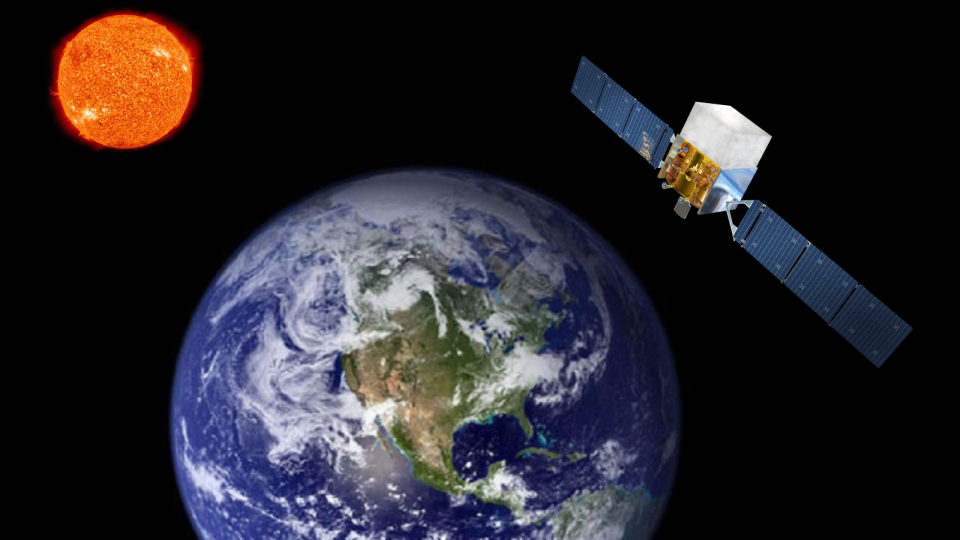If solar scientists aren’t already eager to observe the sun as it reaches solar maximum in 2024, a newly discovered gamma-ray puzzle will add to that desire.
While examining 14 years of data from NASA’s Fermi Space Telescope, a team of researchers found that during the last solar maximum in 2013 and 2014, the Sun’s polar regions emitted high-energy gamma rays as much as 10 times higher than expected.
The Sun is known to shine in all wavelengths of electromagnetic radiation, including gamma rays, but this was expected to be evenly distributed across the solar plane. The team that detected high activity in the polar regions cannot currently explain this imbalance.
“The study of gamma-ray emissions from the Sun represents a new window to investigate and understand the physical processes taking place in the atmosphere of our star,” team leader and Institute for Astrophysics and Space Sciences researcher Bruno Arsioli said in a statement.
“What are the processes that cause these excesses at the poles? Perhaps there are additional mechanisms that generate gamma rays beyond the interaction of cosmic rays with the Sun’s surface.”
Related: Solar maximum will arrive earlier and last longer than previously expected, scientists say
Each solar cycle describes periodic changes in the Sun’s magnetic activity, which last about 11.5 years and include a period of intense activity called solar maximum, with more sunspots spread across the solar plane, more solar flares and a greater outflow of plasma, called coronal mass ejections. (CME).
The upcoming solar maximum of the current solar cycle, which began in December 2019, solar cycle 25, could help explain why the Sun shone brighter in gamma rays at the poles during the last cycle’s peak activity.
Understanding the Sun’s behavior at these maxima could help scientists better predict space weather caused by eruptions and outflows from the Sun, which could disrupt power and communications infrastructure here on Earth and also potentially damage satellites and can threaten astronauts.
Observing a complete solar cycle with NASA’s Fermi Space Telescope
The data used by Arsioli and colleagues was collected by Fermi’s gamma-ray collection instruments between August 2008 and January 2019, and spans an entire solar cycle from the solar minimum of one cycle through the solar maximum to the solar minimum of the next.
To make sense of the data, the team created a tool that could disentangle gamma rays from the Sun from this high-energy radiation from other sources in the background sky. This resulted in the integration of gamma-ray events on the Sun over a time frame of 400 to 700 days, which can be shifted over the 14-year observation period to focus on gamma-ray activity at specific times.

Although the sun shines across all wavelengths of light, 99% of light comes in the form of ultraviolet, visible and infrared radiation. Much higher energy gamma rays emitted by our star come from solar flares, the Sun’s corona and, to a lesser extent, from the photosphere, which is generally considered the Sun’s surface.
“The Sun is being bombarded with particles traveling at nearly the speed of light and coming from all directions from beyond our Milky Way,” team leader and Institute of Astrophysics and Space Sciences researcher Bruno Arsioli said in the statement. “These so-called cosmic rays are electrically charged and are deflected by the sun’s magnetic fields. The radiation interacting with the solar atmosphere produces a shower of gamma rays.”
Scientists had theorized that these gamma-ray bursts would be produced evenly across the Sun. In contrast, Arsioli and colleagues’ results suggest that at higher altitudes something happens to the Sun’s magnetic field, amplifying the output of gamma rays at the poles.
The researchers also discovered another asymmetry in gamma rays, this time between the two poles and involving the energy of the gamma ray photons produced.
“At the South Pole there is a surplus of higher energy emissions, from photons with 20 to 150 giga-electron volts (GeV), while most of the less energetic photons come from the North Pole,” Arsioli added.
Gamma-ray emissions from the poles were particularly concentrated in June 2014, when the Sun’s magnetic poles reversed, a phenomenon that occurs about every 11.5 years at the height of solar maximum.
“We found results that challenge our current understanding of the Sun and its environment,” said team member and University of Trieste scientist Elena Orlando. “We have shown a strong correlation of the asymmetry in solar gamma-ray emission coinciding with the change in the Sun’s magnetic field, revealing a possible link between solar astronomy, particle physics and plasma physics.”
Related stories:
– Severe space weather is ruining bird migration, new research suggests
– Solar storms can destroy satellites with ease – a space weather expert explains the science
– Space weather forecasts get a boost from a new probe on the International Space Station
Understanding the connection between how and where the Sun emits gamma rays and our star’s activity during periods of more frequent solar flares and CMEs could lead to better space weather predictions.
“In 2024 and the following year, we will experience a new solar maximum, and a new inversion of the Sun’s magnetic poles has already begun,” Arsioli added. “We expect to reassess by the end of 2025 whether the inversion of the magnetic fields is followed by an excess of gamma rays from the poles.”
Orlando also suggests that the team’s findings make a strong argument for paying more attention to solar gamma rays.
“We have found the key to unlocking this mystery, which indicates the future directions to be taken. It is fundamental that the Fermi telescope will operate and observe the Sun for years to come,” she said.
“If it is established that high-energy emissions really contain information about solar activity, then the next mission should be planned to provide real-time data on the Sun’s gamma rays,” Arsioli concluded.
The team’s research has been published in The Astrophysical Journal.